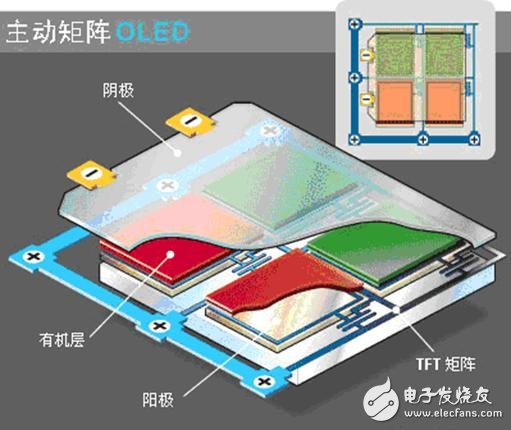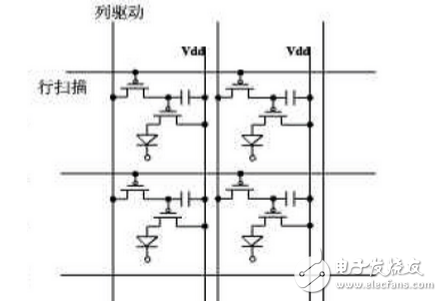Switch Cable,Usb Switch Cable,Dimming Color Switch Cable,Fan Speed Switch Power Cable ShenZhen Puchen Electronics Co., Ltd. , https://www.szpuchen.com


AMOLED drive principle
With the continuous advancement and development of technology, display technology is also changing with each passing day. From CRT to LCD, and then from LCD to AMOLED, the advancement of technology has a subversive impact on the display industry. We are fortunate to have witnessed the whole process of CRT from glory to decline. Although only for more than a decade, the plasma and LED display have emerged in the mid-term. However, only the LCD display is shining. Plasma display has become a history due to cost, energy consumption, and space. LED screens are mainly used in outdoor advertising. For various reasons, it is currently not possible to enter home users and flat panel display applications. The application range is much smaller than LCD.
Although LCD technology has been continuously progressing, from TN to STN, from STN to CSTN, and then from CSTN to TFT-LCD, display color saturation (NTSC) is becoming more and more abundant, and the resolution (ResoluTIon) is getting higher and higher. However, it is always impossible to get rid of the backlight. The LCD itself does not have a light-emitting function. When displaying, the backlight must have a backlight. The liquid crystal molecules are flipped at different angles by the LCD Driver, so that the three sub-pixels of RGB get different gray levels. The light passes through the CF and becomes a pixel that can express various colors. In the process, the backlight of the LCD has only 3%-6% of the use efficiency, which is undoubtedly a huge energy waste. LCD defects have also led to the display of industry-leading people looking for alternatives to LCD displays. The result is AMOLED.
AMOLED (AcTIve Matrix/Organic Light EmitTIng Diode) is a new display technology after TFT-LCD. Compared with liquid crystal display, AMOLED has all solid state, active illumination, high brightness, high contrast, ultra-thin, no viewing angle limitation. The advantages of TFT-LCD, such as a wide operating temperature range. At present, in the global AMOLED industry, Samsung is a single show, controlling 95% of the global production capacity. In recent years, domestic big-name LCD manufacturers are also actively following the trend. BOE, Huaxing Optoelectronics and other manufacturers are also building AMOLED panel factories, Chinese panel makers. With the addition of AMOLEDs, the replacement of TFT-LCDs in the global display field is just around the corner.
The main features of AMOLED are as follows:
1. AMOLED self-illuminating, eliminating the need of backlight illumination source, can save the backlight volume of the display module, at most one piece or even no polarizer, because the OLED has high luminous efficiency and less medium for absorbing light, the module consumes low power and can Made thinner;
2, AMOLED display response time is 1 / 1000 of the traditional liquid crystal, or even smaller, the quality of the display motion picture is much better than the TFT-LCD;
3, AMOLED has no viewing angle limitation, as long as you can see the AMOLED plane, you can see the picture, which is wider than IPS and MVA TFT-LCD;
4, AMOLED can display a clear picture in the sun, which is not available in LCD;
5, AMOLED has good low temperature performance and can be displayed normally at -40 °C, making AMOLED more widely used than LCD in the environment;
6, AMOLED is a solid-state device, no liquid crystal and other substances, strong resistance to pressure and shock, can withstand vibration, acceleration, high and low temperature impact;
7. AMOLED can be fabricated on substrates of different materials, and can even be made into a flexible flexible display on elastic materials. This becomes a flexible display. The display used in future wearable devices must belong to AMOLED.
There are two kinds of AMOLED driving OLED driving methods, which are divided into passive matrix and active (AcTIve Matrix) matrix display. The former is similar to the traditional STN, there is no TFT switching diode, and the ITO and metal electrodes are parallel electrodes. The two are orthogonal to each other and form an LED at the intersection, as shown in Figure c. The AMOLED belongs to the active matrix display. The passive mode is not described in this article. It is of interest to view the STN driver data.
AMOLED device structure
Active matrix OLED (AMOLED) uses a thin film transistor array as shown in Figure d. Similar to the fabrication technique of TFT-LCD, a polysilicon TFT (P-si) is formed on a glass substrate, and a light-emitting layer is formed over the TFT.
AMOLED device structure
AMOLED drive equivalent circuit
The driver circuit performs two functions, one is to provide a controlled current to drive the OLED, and second, to continue to supply current after the address period to ensure that the pixels continue to emit light. Different from PM-OLED, each pixel of AMOLED emits light at the same time, and its equivalent circuit is shown in Figure e. Thus, the requirement of the brightness of a single pixel is reduced. It can be seen that the AMOLED large-area display consumes much less power than the PM-OLED. This is also the reason why the OLED generally adopts active matrix driving. Of course, the manufacturing cost of the AMOLED is higher than that of the PM-OLED.